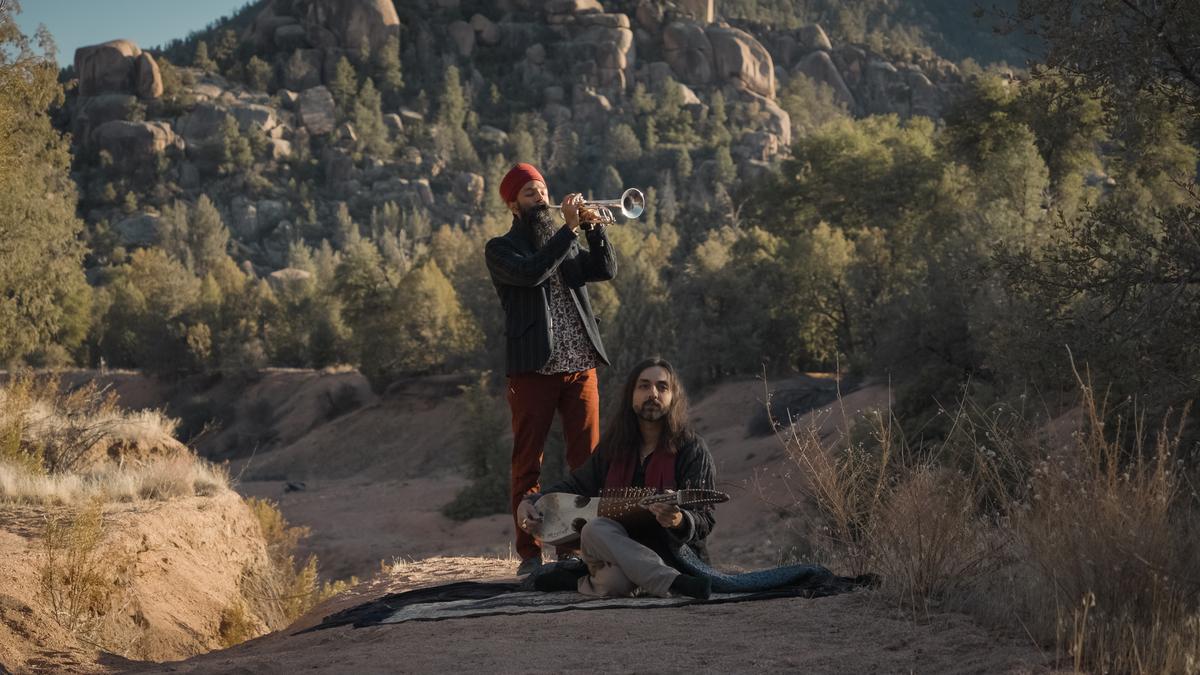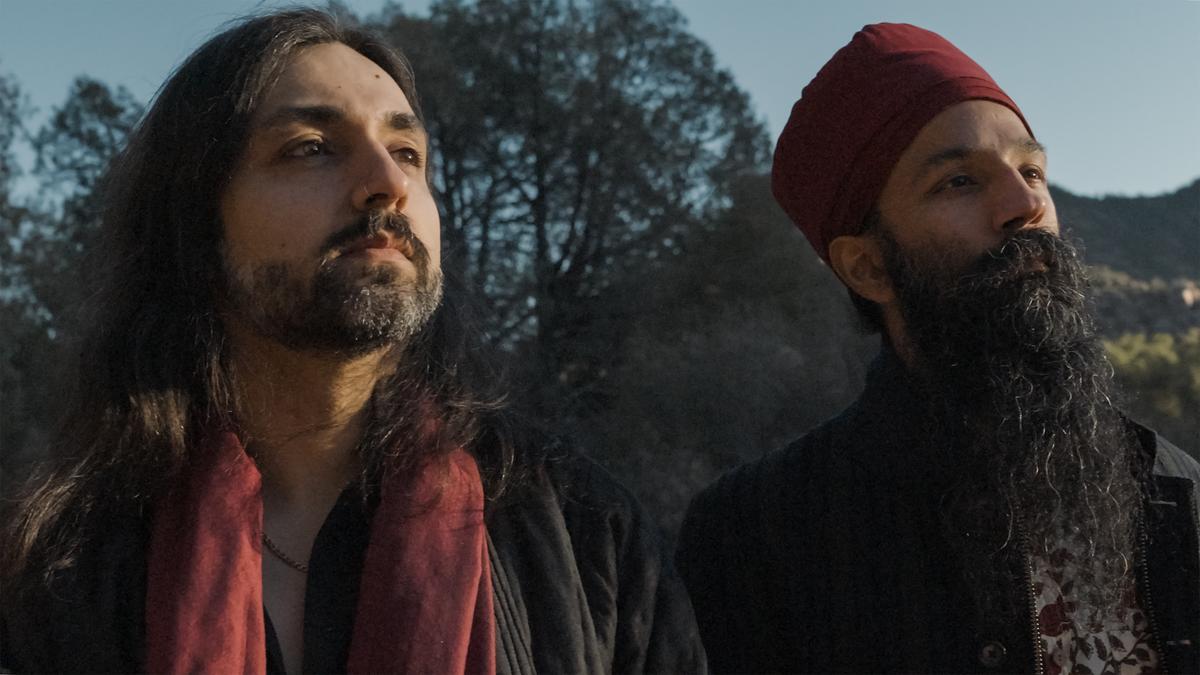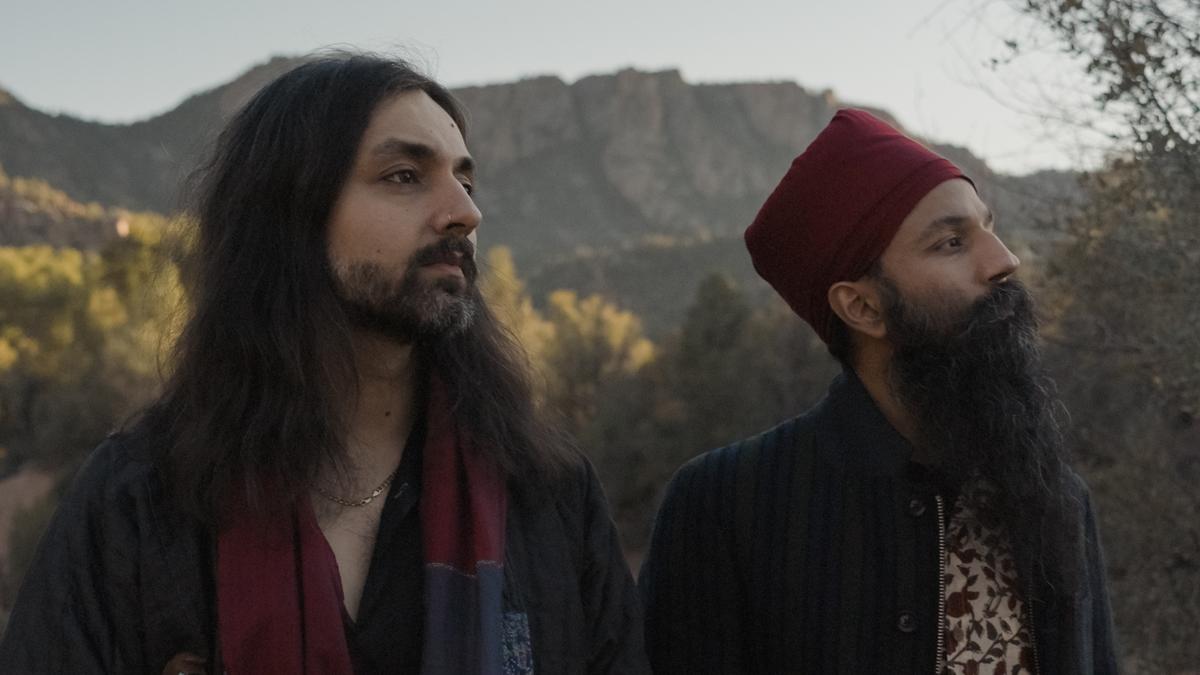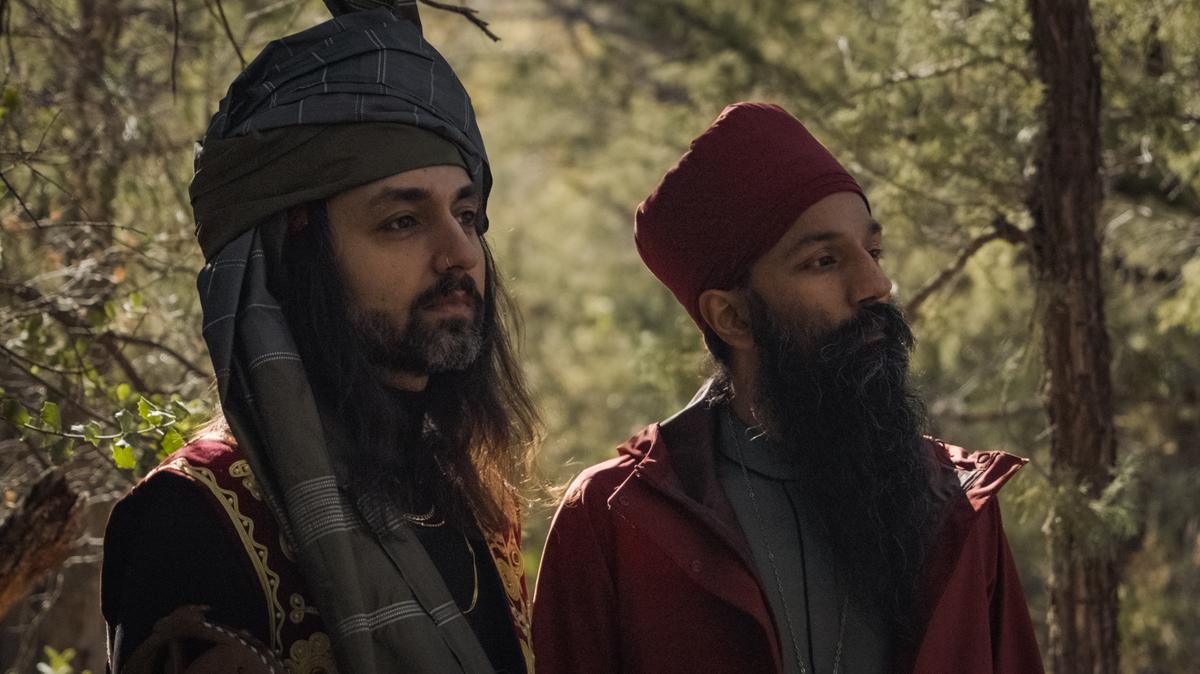The earliest-known bowed instrument, rabab, has joined forces with the trumpet, through an unusually refreshing alliance between musicians Qais Essar, an Afghan-American Muslim, and Sonny Singh, an Indian-American Sikh. Together, they are composing an album, Sangat, which harks back to the defining narratives of Bhakti and Sufi movements (two prominent socio-religious movements in Hinduism and Islam). Among its three compositions released so far, one is an iconic Sufi song, ‘Lal meri pat’, praising the 12th Century mystic Shabaaz Qalandar, and the other two are the renditions of Sikh hymns reimaged on the warm timbre of rabab and accented by the jazzy, raw harmonics of trumpet.
The recently released, ‘Pavan Guru’, is the concluding shlok of Sikh prayer Japji Sahib. It was penned by the founder of Sikhism, Guru Nanak, who conjures up the unifying cultural phenomenon of Sant Mat Bhakti that drew on both Hinduism and Islam. The third track is called ‘Vich Sangat’, a 16th Century Sikh devotional poem by the fourth Sikh guru, Guru Ram Das.
“The album will have a few instrumental tracks centred on improvisation and conversation between the rabab and trumpet. There will be two tracks in Farsi, one of which is Qais’s original composition of a poem by Amir Khusrau, and the other one is a co-composition of a Farsi shabad by Guru Nanak,” says Sonny about Sangat’s upcoming tracks.
Qais plays the rabab, while Sonny plays the trumpet
| Photo Credit:
Special Arrangement
Identifying sangat
He describes the album as a project that is not only a meeting of diverse musical and spiritual traditions, but also a reflection of art as a vehicle for connection, resistance and healing. “In the Sikh community, we generally refer to the worshippers inside a Gurdwara as sangat (beloved community). In this project, we would like to define sangat as something broader, where our ethnic, national and religious identities are porous,” he shares. “For Sikhs and Muslims, specifically, this began with the friendship between Guru Nanak and his musical companion Bhai Mardana who played the rabab and was a Muslim. You see this spirit of solidarity and oneness in the Guru Granth Sahib, the holy book of Sikhs, which includes the writings of not only Sikh gurus, but also of Sufi saints such as Sheikh Farid and radical bhakti poet-saints such as Ravidas, Kabir, and Namdev,” he adds.
Sonny and Qais started working on Sangat in October 2024, some time after they were introduced to each other by a common friend, Sudanese-American singer-songwriter and ethnomusicologist, Alsarah. “I was looking for a musician to accompany me on the six-week Revolutionary Love Tour with author-activist Valarie Kaur. The 40-city tour across the US, including a few gurdwaras in California, New York and Wisconsin, was part of my second album Sage Warrior that accompanied Valarie’s eponymous book,” says Sonny. Driven by electric guitar, drums, dholki and trumpet, ‘Pavan Guru’ was featured on Sage Warrior too, but Qais’s rabab on tours added a spiritual dimension to the hymn, reinterpreting its musical texture from Nanak and Mardana’s travels around South Asia and the Middle East. “We opened our concerts with ‘Pavan Guru’ and started our project with the recording of the hymn this February,” Sonny shares.

Sonny and Qais started working on Sangat in October 2024
| Photo Credit:
Special Arrangement
Instruments of peace
Recorded mostly in Qais’s studio in Payson, Arizona, Sangat will be released in October this year through his indie label and production company Ghost Songs. With five albums and 12 EPs to his credit, Qais’s merit in pursuing music through rabab commands attention. He confirms his family’s commitment to art, poetry and music — stating that his grandfather played tambour — but, he assures: “I am the first rabab player in my family”.
On rabab, Qais has also composed film music for the BAFTA-nominated short film Yellow and Academy Award-nominated films Three Songs for Benazir and The Breadwinner. “Rabab allows me to transport my thoughts and feelings to the world. In my years of practise, I have pioneered many techniques and ways of playing the rabab, specifically ‘gayaki’ (playing in a vocal way), and western concepts of harmony, such as chords. The mixture of the contemporary style firmly rooted in tradition gives the music ancestral power in the modern world,” he says.

While Qais is reviving the rabab with intentional fervour, Sonny, with his trumpet, is pushing the boundaries of conventions that dictate the way kirtan is performed.
| Photo Credit:
Special Arrangement
Rabab is the national instrument of Afghanistan, the country from where Qais’s parents migrated to the US in 1982. The instrument, though not banned, is under threat from Taliban’s ban on music. So, does Qais see the act of taking up rabab as that of defiance or reverence to its rich cultural history? “Playing rabab is an act of defiance and defence of cultural history. We protect that which we revere,” he replies.
His words bring to mind “Free Palestine” inked on Qais’s rabab in the video of ‘Pavan Guru’.
While Qais is reviving rabab with intentional fervour, Sonny, with his trumpet, is pushing the boundaries of conventions that dictate the way kirtan (hymn-singing) is performed. He has the uncanny knack of playing devotional songs and ballads of rebellion with virtuosic ease and intensity. For instance, in his first album, Chardi Kala, he sang hymns like ‘Aisee Preet’, ‘Mitar Pyare Nu’ and ‘Koi Bol Ram’ alongside fiery, anthemic compositions like ‘Ghadar Machao’.

Qais’s rabab added a spiritual dimension to the hymn, reinterpreting its musical texture from Nanak and Mardana’s travels around South Asia and the Middle East
| Photo Credit:
Special Arrangement
Cultural paradox
On what prompted him to collaborate with Sonny for Sangat, Qais says, “Music has always been a tool for healing, justice, and unity. This project is my offering to that sacred stream.” He adds, “Guru Nanak and Bhai Mardana knew then what we know now, that music is the powerful way to deliver a message to your heart.”
Interestingly, the conversations on the rabab gathered steam in 2022 when the Akal Takht Jathedar requested the replacement of the harmonium with traditional string instruments such as the dilruba, rabab, and sarangi in kirtan at the Golden Temple. The idea was to revive the tradition of using string instruments in Sikh religious music. “For centuries, starting with Bhai Mardana in the 1500s, Muslim rababis were a crucial part of the Sikh kirtan tradition. Many master musicians playing at the Golden Temple were Muslims. It is a travesty that they were pushed out. That process began in the early 1900s, and Partition (1947) sealed the deal. In the context of British colonialism, many of our communities became more rigid about their religious identities. The beauty of the oneness or the idea of ‘Ik Oankar’ (mool mantra) that is central to Sikhism began to be chipped away,” says Sonny. “When Muslim rababis were expelled, much of the knowledge of the raags of the Guru Granth Sahib as well as the expertise on original instruments, like the rabab, were also lost.”

Interestingly, the conversations on the rabab gathered steam in 2022 when the Akal Takht Jathedar requested the replacement of the harmonium with traditional string instruments such as the dilruba, rabab, and sarangi in kirtan at the Golden Temple.
| Photo Credit:
Special Arrangement
By the time you read this article, Qais and Sonny would have played their first live shows as Sangat in the Bay Area, California. Sonny hopes that this music becomes “a space for reflection, action for justice and liberation for all.” His words bring to mind ‘Free Palestine’ inked on Qais’s rabab in the video of ‘Pavan Guru’. As for Sangat, it continues to pave the way for experimental music, a symphony of a cultural paradox where the rabab and trumpet, old and new, Sikh and Muslim, Afghani and Indian, Guru Nanak and Bhai Mardana and Bhakti and Sufi movements — everything is connected to the sacred chord of humanism.


